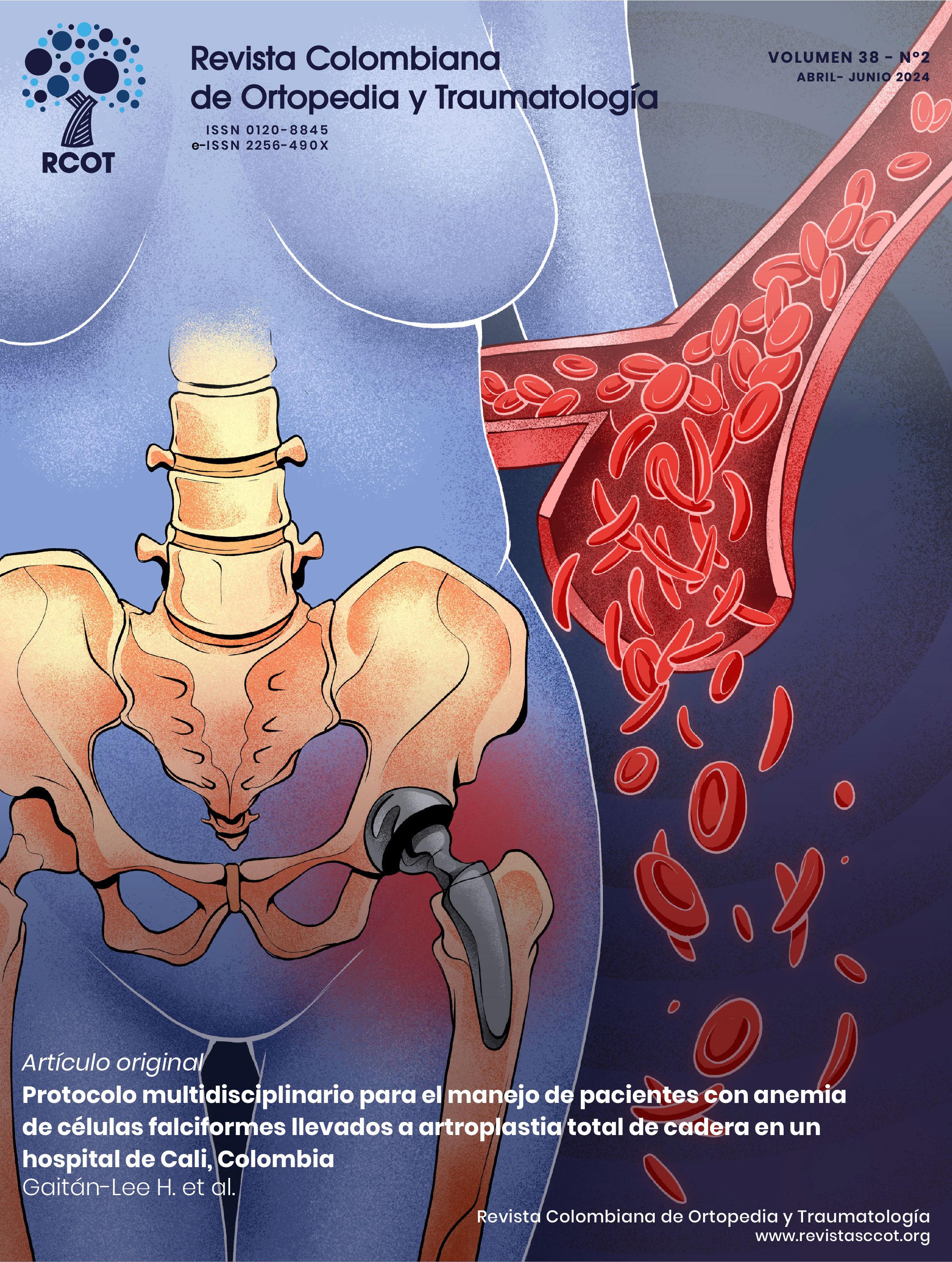Decompression of the axillary nerve branch innervating the teres minor muscle. Report of two cases
DOI:
https://doi.org/10.58814/01208845.51Keywords:
Decompression, Teres Minor Muscle, Atrophy, Case ReportsAbstract
Introduction: Entrapment neuropathy of the axillary nerve branch innervating the teres minor muscle is a rare condition; however, the intensity of the symptoms considerably affects the quality of life of these patients.
Cases presentation: A 59-year-old woman and a 44-year-old man visited the orthopedics and trauma service of a health institution specialized in orthopedics, trauma, and sports injuries located in Barranquilla (Colombia) due to chronic (more than one year) and intense pain (visual analog scale: 8/10) in the right shoulder (dominant limb in both cases) refractory to previous treatments with oral medications and physical therapy. Neither patient had a history of trauma or surgery to the shoulder. On physical examination, both patients had positive hornblower's sign, external rotation strength in abduction at 45° of 3/5, pain in the quadrangular space, and positive Jobe test. A non-contrast MRI showed muscle atrophy and fatty infiltration of the teres minor (grade 2 in the Goutallier classification), so they were diagnosed with entrapment neuropathy of the axillary nerve branch innervating the teres minor. The patients underwent a one-stage surgical procedure involving two phases (shoulder arthroscopy and open neurolysis of the axillary nerve branch innervating the teres minor, respectively), achieving improvement in terms of function and pain up to 4 months of follow-up.
Conclusion: The surgical procedure described here allowed achieving satisfactory outcomes in both patients in terms of pain and function, thus improving their quality of life considerably.
Downloads
References
Kruse LM, Yamaguchi K, Keener JD, Chamberlain AM. Clinical outcomes after decompression of the nerve to the teres minor in patients with idiopathic isolated teres minor fatty atrophy. J Shoulder Elbow Surg. 2015;24(4):628-33. https://doi.org/f26pxs.
Cothran RL, Helms C. Quadrilateral space syndrome: incidence of imaging findings in a population referred for MRI of the shoulder. AJR Am J Roentgenol. 2005;184(3):989-92. https://doi.org/m59d.
Sofka CM, Haddad ZK, Adler RS. Detection of muscle atrophy on routine sonography of the shoulder. J Ultrasound Med. 2004;23(8):1031-4. https://doi.org/m59f.
Dalagiannis N, Tranovich M, Ebraheim N. Teres minor and quadrilateral space syndrome: A review. J Orthop. 2020;20:144-6. https://doi.org/ghffkv.
Flynn LS, Wright TW, King JJ. Quadrilateral space syndrome: a review. J Shoulder Elbow Surg. 2018;27(5):950-6. https://doi.org/gd4rng.
McAdams TR, Dillingham MF. Surgical decompression of the quadrilateral space in overhead athletes. Am J Sports Med. 2008;36(3):528-32. https://doi.org/b33vd7.
Cahill BR, Palmer RE. Quadrilateral space syndrome. J Hand Surg Am. 1983;8(1):65-9. https://doi.org/m6dn.
Borrel F, Desmoineaux P, Delcourt T, Pujol N. Feasibility of arthroscopic decompression of the axillary nerve in the quadrilateral space: Cadaver study. Orthop Traumatol Surg Res. 2021;107(1):102762. https://doi.org/m6fw.
Postan D, Poitevin LA. Síndrome cuadrilátero. Segunda parte. Dinámica de la compresión del nervio axilar, con especial énfasis en la atrofia del teres minor. Rev Arg Anat Ont. 2014;5(2):63-6.
Walch G, Boulahia A, Calderone S, Robinson AH. The “dropping” and “hornblower’s” signs in evaluation of rotator-cuff tears. J Bone Joint Surg Br. 1998;80(4):624-8. https://doi.org/b2n69n.
Gutierrez L, Cullaris M, Ranalletta M, Tanoira I, Gomez C, Bendersky M. Sindrome del espacio cuadrilátero; ¿Infrecuente o insospechado? Rev Arg de Anat Clin. 2016,8(2):87-92. https://doi.org/m873.
Linker CS, Helms CA, Fritz RC. Quadrilateral space syndrome: findings at MR imaging. Radiology. 1993;188(3):675-6. https://doi.org/m6fz.
Millett PJ, Gaskill TR. Arthroscopic trans-capsular axillary nerve decompression: indication and surgical technique. Arthroscopy. 2011;27(10):1444-8. https://doi.org/c6ppm7.
Downloads
Published
How to Cite
Issue
Section
License
Copyright (c) 2024 Revista Colombiana de ortopedia y traumatología

This work is licensed under a Creative Commons Attribution 3.0 Unported License.




